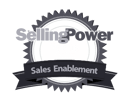
How to Execute Your Sales Strategy Effectively Using Win/Loss Analysis (Part 3/3)
Over the past two weeks on this blog, I have laid out a simple framework for using win/loss analysis to massively improve your sales effectiveness, including how to collect the right data and how to supercharge your sales strategy.
This week, we’ll drill down with your win/loss analysis to vastly improve sales execution, from process to team skills.
How to Improve Sales Process through Win/Loss Analysis
Your sales process is the primary tool through which you execute on sales strategy. A well-designed and implemented sales process enables you to keep your team focused on the right customers, and to approach them in a systematic way that aligns with how you know to win the best deals.
In order to examine the effectiveness of your process through win/loss analysis, you must have tools in place that provide process insight, beyond the standard “process stage” dropdown boxes.
Investing time in your win/loss analysis process can pay huge dividends.
When teams work inside Membrain, for instance, every aspect of the sales process is built into the salesperson’s workflow. Everything is recorded and tracked, and salespeople are guided through every step with checklists, steps, milestones, enablement content, and criteria that must be met before sales projects increase pipeline forecasting probability.
Sales leaders can use the data collected through the process workflow to analyze:
- Where deals are slowing down during the process
- Where deals drop off and fail to close
- What factors are common among deals that fail at similar stages of the process
- Whether salespeople are following the process and the impact that compliance and non-compliance has on win rates
Using this information, you can adjust the process to add new rules or behaviors to address slow or poorly performing aspects of the process. You can identify deals that are unlikely to close, earlier in the process, and drop them out of the process sooner to redirect resources to other opportunities.
And where you see salespeople are not being effective, you can use that information to launch an inquiry into why not.
- Are they not engaging the right stakeholders at the right time?
- Do they not have the skills to effectively execute on that aspect of the sales process?
- Do they not understand the value of certain steps or milestones?
- Are they missing something that would enable them to perform that activity?
- Are they rushing forward, leaving the customer behind?
- Are their managers not effectively incentivizing and coaching them to that aspect of the process?
- Are they willing to improve their performance against that portion of the process? If so, what do they need in order to do so?
Based on this information, you can add training, coaching, and enablement content to improve salespeople’s ability and willingness to increase their effectiveness (and that of your process.
How to Improve Your Sales Enablement Content with Win/Loss Analysis
Using the same tools as above, you can analyze the performance of sales enablement content against your wins and losses. For instance, are you closing more often on deals that receive certain content, and losing more often with those that don’t? Does the process slow down after using one piece of content or speed up with another?
This detailed level of analysis can help you plan to improve, update, and streamline your content to move prospects through the process more quickly and effectively. It can also help you weed out any content that is counter-productive.
How to Improve Team Skills and Training with Win/Loss Analysis
Once you understand how your strategy and process is impacting your wins and losses, you can drill down further and separate the process from the skills to implement it.
While examining whether your salespeople are adhering to your process, you can identify areas where they are missing appropriate skills to execute. This can be addressed through training, coaching, and embedded content.
You can drill down further to the individual level to identify areas where specific salespeople are skipping steps or performing poorly at specific portions of the process. For instance, if most of your salespeople are moving prospects quickly through one step but one or two are stuttering at that stage, you may determine that those two salespeople need upskilling in that area.
In this way, you can target your training investments in the coming year to address the areas that will give your team the biggest performance boost.
Adding Qualitative Data to the Win/Loss Analysis
So far, I have talked primarily about using the data in your CRM and sales workflow tools to perform win/loss analysis. But there are some important things that you can only find out through qualitative conversations.
It’s worthwhile to hire a third party to contact new customers and newly archived sales projects and conduct qualitative interviews about their experience with your sales process. People are generally more willing to be honest and frank with a third party, and to give you the information you need to improve the experience from their point of view.
Questions your third party interviewer might ask include:
- What was your overall experience of the sales process?
- Did you find the salespeople to be knowledgeable?
- Did the sales conversations add value to you and your business?
- Why did you or didn’t you engage at this step of the process?
- Did the sales person involve all the relevant stakeholders?
- What were the key factors that impacted your decision to engage or not engage further in the sales process?
- What were the key factors that impacted your decision to buy or not buy?
By having these qualitative conversations, you can further engage your analysis through every aspect of your business to improve from the strategy through execution, to skills and content.
Investing time in your win/loss analysis process can pay huge dividends in the coming year. Don’t skimp on this or rush through it. Start now, and take your time. To help you stay on track, refer back to this blog series as often as you need. For reference, you can find Part One here, and Part Two here.
What else would you add to this process? What do you find most important during your win/loss analysis?

By George Brontén
George is the founder & CEO of Membrain, the Sales Enablement CRM that makes it easy to execute your sales strategy. A life-long entrepreneur with 20 years of experience in the software space and a passion for sales and marketing. With the life motto "Don't settle for mainstream", he is always looking for new ways to achieve improved business results using innovative software, skills, and processes. George is also the author of the book Stop Killing Deals and the host of the Stop Killing Deals webinar and podcast series.
Find out more about George Brontén on LinkedIn







